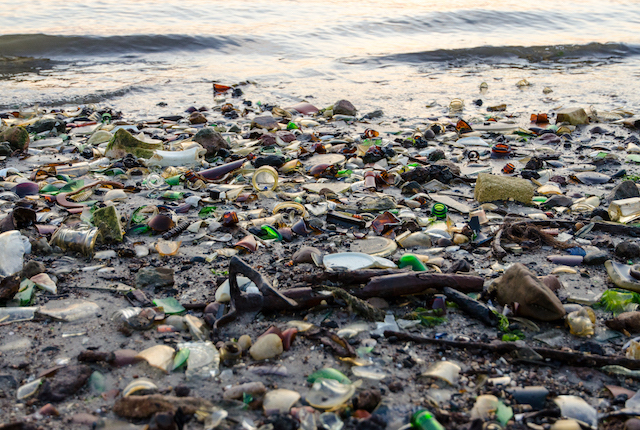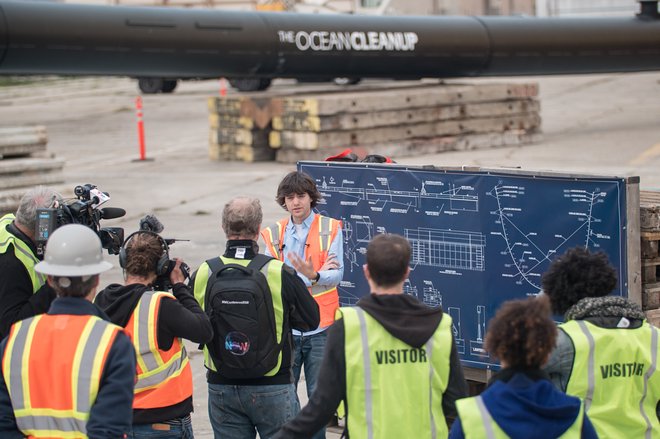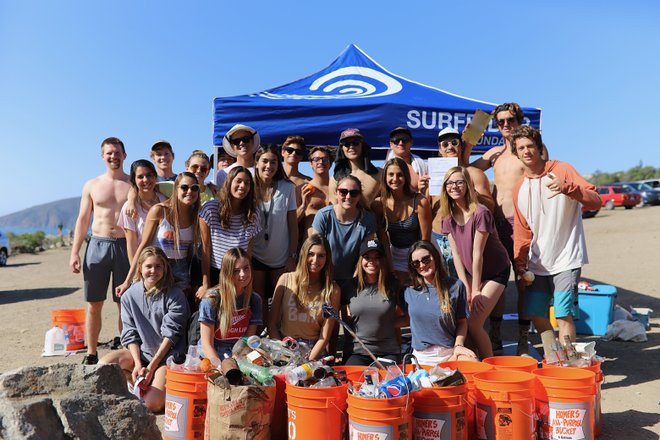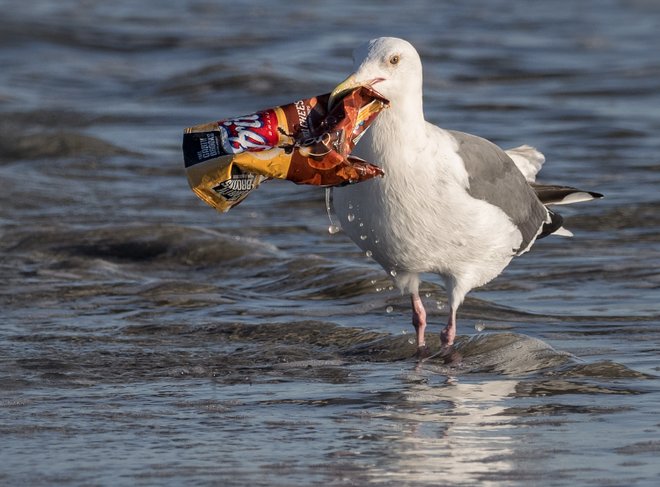
Picture blue skies, pristine white sand, the crashing sound of surf, and the call of a seagull overhead. The images of a perfect beach day are so engrained in our cultural consciousness that putting them in print is almost unnecessary. But unfortunately, in many parts of the world, this serene scene is quickly becoming something of a distant memory. Recently, more and more beaches around the world, from the Dominican Republic to the Philippines to Bali, are being pummeled with piles of trash. Below, we took a look at just how much pollution exists in the world's oceans and how various organizations are combating the issue.
Notice: Undefined offset: 4 in /nas/content/live/stagingstmllc/wp-content/plugins/smartertravel-shared/includes/ads/includes/api.php on line 92
Notice: Undefined offset: 5 in /nas/content/live/stagingstmllc/wp-content/plugins/smartertravel-shared/includes/ads/includes/api.php on line 92
Notice: Undefined offset: 6 in /nas/content/live/stagingstmllc/wp-content/plugins/smartertravel-shared/includes/ads/includes/api.php on line 92
Notice: Undefined offset: 4 in /nas/content/live/stagingstmllc/wp-content/plugins/smartertravel-shared/includes/ads/includes/api.php on line 98
Notice: Undefined index: pass_through_args in /nas/content/live/stagingstmllc/wp-content/plugins/smartertravel-shared/includes/ads/includes/api.php on line 158
Notice: Undefined index: wrapper in /nas/content/live/stagingstmllc/wp-content/plugins/smartertravel-shared/includes/ads/includes/api.php on line 159
Notice: Undefined offset: 4 in /nas/content/live/stagingstmllc/wp-content/plugins/smartertravel-shared/includes/ads/includes/api.php on line 92
Notice: Undefined offset: 5 in /nas/content/live/stagingstmllc/wp-content/plugins/smartertravel-shared/includes/ads/includes/api.php on line 92
Notice: Undefined offset: 6 in /nas/content/live/stagingstmllc/wp-content/plugins/smartertravel-shared/includes/ads/includes/api.php on line 92
Notice: Undefined offset: 4 in /nas/content/live/stagingstmllc/wp-content/plugins/smartertravel-shared/includes/ads/includes/api.php on line 98
Notice: Undefined index: pass_through_args in /nas/content/live/stagingstmllc/wp-content/plugins/smartertravel-shared/includes/ads/includes/api.php on line 158
Notice: Undefined index: wrapper in /nas/content/live/stagingstmllc/wp-content/plugins/smartertravel-shared/includes/ads/includes/api.php on line 159
Notice: Undefined offset: 4 in /nas/content/live/stagingstmllc/wp-content/plugins/smartertravel-shared/includes/ads/includes/api.php on line 92
Notice: Undefined offset: 5 in /nas/content/live/stagingstmllc/wp-content/plugins/smartertravel-shared/includes/ads/includes/api.php on line 92
Notice: Undefined offset: 6 in /nas/content/live/stagingstmllc/wp-content/plugins/smartertravel-shared/includes/ads/includes/api.php on line 92
Notice: Undefined offset: 4 in /nas/content/live/stagingstmllc/wp-content/plugins/smartertravel-shared/includes/ads/includes/api.php on line 98
Notice: Undefined index: pass_through_args in /nas/content/live/stagingstmllc/wp-content/plugins/smartertravel-shared/includes/ads/includes/api.php on line 158
Notice: Undefined index: wrapper in /nas/content/live/stagingstmllc/wp-content/plugins/smartertravel-shared/includes/ads/includes/api.php on line 159
Notice: Undefined offset: 4 in /nas/content/live/stagingstmllc/wp-content/plugins/smartertravel-shared/includes/ads/includes/api.php on line 92
Notice: Undefined offset: 5 in /nas/content/live/stagingstmllc/wp-content/plugins/smartertravel-shared/includes/ads/includes/api.php on line 92
Notice: Undefined offset: 6 in /nas/content/live/stagingstmllc/wp-content/plugins/smartertravel-shared/includes/ads/includes/api.php on line 92
Notice: Undefined offset: 4 in /nas/content/live/stagingstmllc/wp-content/plugins/smartertravel-shared/includes/ads/includes/api.php on line 98
Notice: Undefined index: pass_through_args in /nas/content/live/stagingstmllc/wp-content/plugins/smartertravel-shared/includes/ads/includes/api.php on line 158
Notice: Undefined index: wrapper in /nas/content/live/stagingstmllc/wp-content/plugins/smartertravel-shared/includes/ads/includes/api.php on line 159
How Polluted Are the World's Oceans and Seas?
According to a 2018 report by the World Wide Fund for Nature (WWF), plastics make up 60 to 95 percent of the world’s oceanic pollution. Of that, they estimate that 80 percent comes from land sources and collects in lakes, rivers, inland streams, oceans, marinas, ports, harbors, and beaches. As of 2015, researchers determined that humans have created 9.1 billion tons of plastics since the middle of the 20th century. That’s roughly the equivalent of nearly 250 million loaded tractor trailers, or over 1.8 billion average-size adult male elephants.
And while it isn’t visible from the shore, many of the world’s oceans harbor massive fields of floating plastics that wreak havoc on aquatic ecosystems. Oprah made the Great Pacific Garbage Patch famous in 2009, but there are currently five such patches across the globe. In fact, the Great Pacific Garbage Patch consists of two separate massive expanses of plastic trash that have coalesced into one toxic, life-destroying mass. An early 2018 article published in Nature revealed that the Great Pacific Garbage Patch now spans over 600,000 square miles of the ocean’s surface. In other words, it’s around the same size as France, Spain, Germany, and the United Kingdom combined, or just a bit smaller than Alaska.
Turning Garbage Into Money — and Getting It Out of the Ocean
The Ocean Cleanup’s founder with system blueprints/Courtesy of The Ocean Cleanup
In an age when things seem damaged beyond repair, the temptation to ignore this issue can be seductive. Luckily, though, there are various groups out there doing the work to mitigate oceanic pollution on several levels. When we spoke with The Ocean Cleanup, a company working to develop tech-forward systems to clean oceanic garbage patches, they told us that there isn’t much time to waste. “Every year, millions of tons of plastic…drift into large systems of circulating ocean currents, also known as gyres,” said a spokesperson at the company. “Once trapped in a gyre, the plastic will break down into microplastics and become easier to mistake for food by sea life. The plastic is thus entering the food chain — a food chain that includes us humans.”
With the Great Pacific Garbage Patch continuing to grow, it’s hard to comprehend how we can undertake any project with a large enough scope to diminish the issue. The Ocean Cleanup was founded in 2013 by a then-16-year-old high school student named Boyan Slat. After encountering pollution on a diving trip in the Mediterranean Sea, Slat decided that the deceptively simple idea of taking plastic out of the ocean on a large scale must be achieved. This initial thought turned into a full-fledged initiative with plans to decrease the garbage patch by 50 percent by 2025.
So, how does it work? According to source at The Ocean Cleanup, System 001 — to be deployed in September 2018 — is a “600-meter system with a diameter of four feet. After a 14-day trial, 240 nautical miles offshore, the system will be either towed to the Great Pacific Garbage Patch or return to shore for minor alterations.” The system essentially consists of a thick, elongated buoy that harvests the floating trash. When we asked about the ultimate goal, The Ocean Cleanup responded: “The plan is to reach the full fleet of 60 systems by 2020, with the help of corporate sponsoring.” That corporate sponsoring is offset with a plan to recycle the plastics once they are brought back onshore. “After the first system is successful, revenue gained by recycling and reselling the extracted plastic from the North Pacific Gyre to B2C companies will help fund the expansion of our cleanup efforts to the other four gyres,” the source said.
While this may seem like it only addresses the symptom and not the problem, The Ocean Cleanup’s hope is that by committing the harvested plastic to more durable goods, as opposed to single-use items, plastic-use habits will change. “Plastic is an incredibly versatile and durable material,” said the spokesperson. “When we recycle the ocean plastic, we are looking to partner with B2C companies producing durable products. These durable products have less risk of ending up in the ocean than fast-moving consumer goods that are often used only once and thrown away.”
Mobilizing Communities and Developing Legislative Strategies
Beach Cleanup/Courtesy of Surfrider Foundation
Surfrider Foundation, one of the leading beach and ocean advocacy groups in the United States, has equally humble roots. According to Melissa Mefford, communications manager for the organization, “More than 30 years ago, three surfers — Glenn Hening, Lance Carson and Tom Pratte — were concerned about the environmental threats posed by escalating coastal development and pollution at their favorite surf break in Malibu, California.” From there, the non-profit has grown exponentially, and includes 160 volunteer-led chapters and student clubs, as well as 50 staff members.
The Surfrider Foundation works on multiple levels, from everyday citizens volunteering at beach cleanups to leveraging business interests to score legislative victories. We also spoke with Peter Stauffer, environmental director of the organization, who highlighted Surfrider’s major recent wins. “Last year, we protected federal funding for the BEACH Act, which supports water quality monitoring at beaches around the country,” he said. But their activism doesn’t stop there. “Another top priority right now is stopping new offshore drilling,” said Stauffer. “There’s a proposal on the table to expand offshore drilling to 90 percent of U.S. waters, [whereas] right now it’s limited to the Gulf of Mexico. We went to Washington, D.C., in February 2018 with 100 chapter members and business leaders from around the country to meet with the Department of Interior’s Bureau of Ocean Energy Management, and others, delivering surfboards signed by more than 100 businesses that stand against offshore drilling.”
Stauffer’s point is simple: Combat corporate disregard for the environment by demonstrating how dependent the U.S. economy is on its oceans and beaches. “Aside from ongoing grassroots initiatives, we are also focusing on impacts to coastal businesses related to beach-going and coastal tourism,” Stauffer revealed. “These businesses generate over $100 billion per year.” In just 2018 alone, the Surfrider Foundation has helped pass 20 laws against plastics pollution in the United States, while enrolling over 300 businesses in its Ocean-Friendly Restaurants program, which rewards businesses for eco-friendly practices, from sustainability to decreased reliance on single-use plastics. On a more local level, Surfrider told us that in 2017, 25,000 volunteers removed 145,000 pounds of plastic in their beach cleanups.
Making Changes on a Personal Level
https://www.instagram.com/p/BluZdg6h0tT
No matter who we spoke with, the message remained the same: Our own behavior is very much tied to whether or not our oceans will survive. That includes how we handle single-use plastics and at what point we choose to get involved with conservation efforts, whether that means buying goods made only from recycled plastics or participating in beach cleanups with Surfrider.
We recently spoke with Danny Ray Cuhen, a digital content manager living in New York City, who told us about his time spent documenting plastic cleanup programs in Bali, an island that’s struggling under the weight of unchecked tourist development and oceanic pollution. “I became involved with Make a Change World through my friendship with the founder, Gary Bencheghib, who I met in film school back in 2014,” said Cuhen. “He had done an exhibition here in the U.S. with another team, where they went down the Mississippi on a raft made out of recycled wood and plastic bottles. It inspired him to do his own work around the world. He moved back to Bali, which is where he grew up, to focus on Make a Change World. He contacted me about going to Bali to do photos and video as he went around and collected data on how much trash was accumulating on [the island’s] beaches.” Make a Change World uses short videos to put a human voice to the local struggle against the accumulation of single-use plastics along Bali’s beaches and in surrounding waters.
Interestingly, Cuhen’s own experience in New York’s less-than-pristine streets made the experience more jarring, rather than diminishing its effect. “Living in NYC, I am confronted with trash every day, and I have almost become immune to it,” he said. “However, being in paradise and seeing mounds of trash — not only on the beaches, but also in the rivers and ocean — was heartbreaking. It was a very visual duality of the effects our carbon footprint is having on the world.”
You’ll Also Like:
- 7 Gorgeous Beach Destinations That Can Be Hazardous to Your Health
- What It’s Really Like to Go on a Ecotourism Adventure in Puerto Rico
- Places Where Climate Change Is Already Impacting Your Travels
All products are independently selected by our writers and editors. If you buy something through our links, Oyster may earn an affiliate commission.
